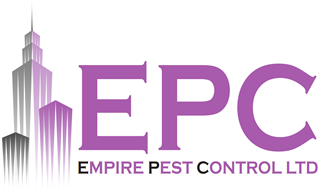
Common Problems with Moths
Moths are often seen as a natural part of the ecosystem, but far from being nocturnal butterflies or anything quite so innocent, they are a pest. The Common Clothes Moth, in particular, is a big problem for homes and businesses in the London area because of the damage it causes to soft furnishings of all kinds.
If you are a business selling textiles or upholstered goods and carpets, a Common Clothes Moth infestation could cost you your income, or at least a significant portion of your profit. The moths themselves have the sole purpose of reproducing, and their larvae nest in and feed on fabrics, posing a problem for companies storing and selling textile goods.
Similarly, domestic moth infestations can be unpleasant and expensive, as the larvae could destroy everything from sofas, carpets and curtains, to wardrobes full of clothes and antique furs or soft furnishings.
To keep your home and business free from moth damage, you need to seek advice and treatment from moth fumigation experts like Empire Pest Control. Our experience delivering effective moth control solutions means we can identify and treat difficult infestations, where amateur attempts might not prove successful.
About Moths
Unlike most species, which are attracted to light, the Common Clothes Moth prefers dark conditions, seeking shelter in low-lit corners and other such spaces. This is true for both the adults and the larvae, the latter of which will crawl to dark corners or under furniture and undisturbed soft furnishings to avoid light.
It is in these darkened spots that the larvae cause the most damage, and the population is left to grow with minimal threat. Contrary to popular belief, adult moths do not feed on clothing and fabrics; in fact, they do not feed at all. Once in an adult state, male moths will look for mates, females for suitable nesting areas to reproduce; respectively, these are their only responsibilities. However, larvae forage constantly from the moment they hatch until the moment they pupate and undergo metamorphosis, and it is this feeding that causes the damage.
Clothes Moth larvae feed on:
- Wool
- Feathers
- Fur
- Hair
- Leather
- Lint
- Dust
- Paper
- Natural bristle brushes
- Natural fabrics (cotton, linen, silk)
- Synthetic fibres (sometimes)
They are particularly drawn to fabrics with stains or traces of beverages, urine, sweat, and oil from hair. As such, in addition to stored clothing and fabrics, laundry bins can also harbour larvae populations.
If your home is infested with moth larvae, it may not be immediately apparent because larvae can take anywhere between two months and two years to feed and pupate if conditions are not ideal. They then spend a further two months undergoing metamorphosis in their cocoon, before emerging as adults, ready to mate and expand the population again.
Once in its adult stage, a Common Clothes Moth will have a body length of 6-8mm and a wingspan of 9-16mm (as opposed to the yellowish-white larvae which measure 10mm in length when fully mature). Their wing colouring is almost golden, with fringed margins, offering a recognisable appearance.
Moth Fumigation is Needed
The first step in solving your moth problem is discovering the source of the infestation, prior to moth fumigation. Wardrobes and stored items are popular places to find larvae and eggs, with damaged fabrics displaying holes, white larvae, their silk cases, silk threads and faecal pellets, which are all good indicators of infestations. Be aware, though, that eggs are attached to surfaces with a strong adhesive-like substance, so they can be difficult to remove.
Clothes cannot be treated with insecticides directly, and carpets, which are another favourite of clothes moths, can be hard to penetrate with treatment chemicals. Cleaning your property and washing fabrics thoroughly on a regular basis can deter moth populations, but getting rid of them requires specialist knowledge and professional moth fumigation services. You can use non-staining insecticides for soft furnishings, or you can opt for pheromone traps, but to rid your property of destructive larvae, and the very likely chance of a moth re-infestation, call Empire Pest Control today.


